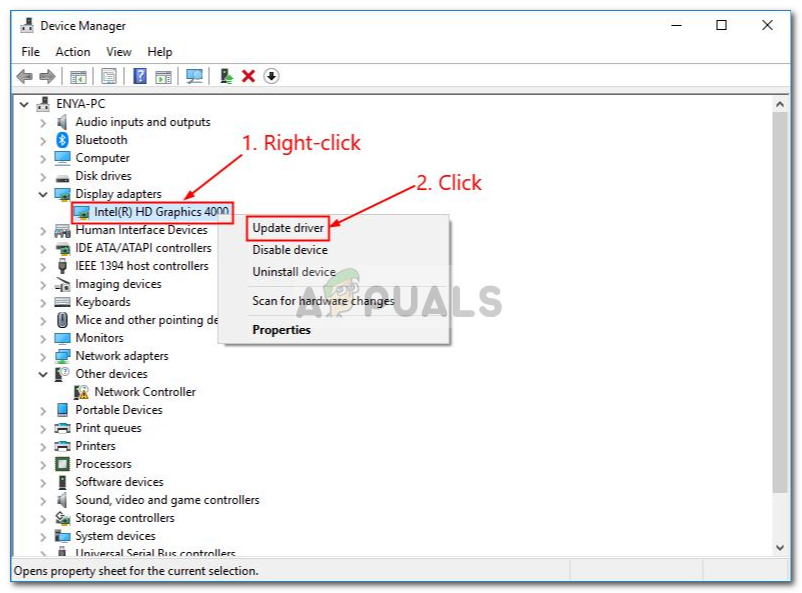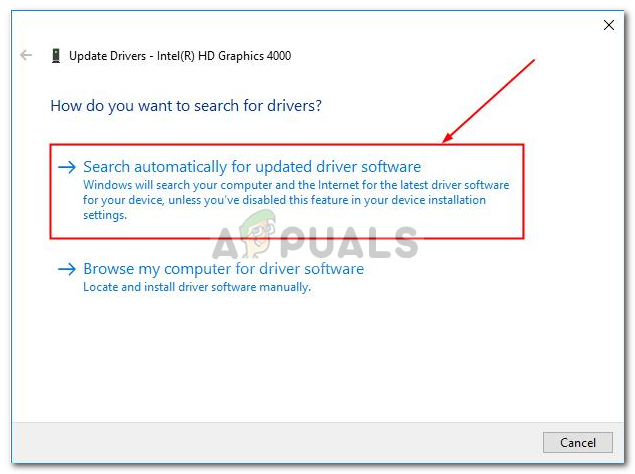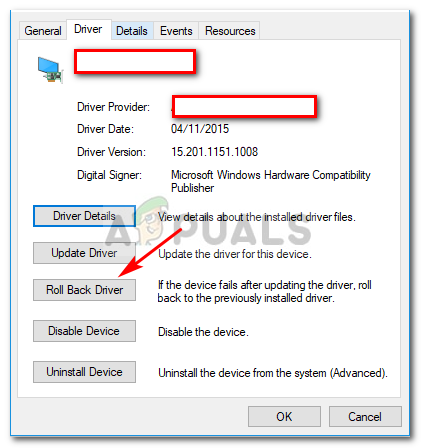Fix: igfxEM module has stopped working
The ‘igfxEM module has stopped working’ error is usually caused if you have an outdated Intel Graphics driver or an unstable one. It is a component of the Intel® Common User Interface and is not, in any way, related to the core of Windows. It is mostly used in Laptops and works as a Display Resolution persistent. However, some malware uses this process as a disguise so be thoughtful of it. Please refer to this article if you are intrigued to find more information relating igfxEM.exe file.
You are most likely to get this error after your Windows boot up though it’s not a security risk. This only means that your drivers are outdated or you are using an unstable version in which case you should roll back your graphics driver.

What causes igfxEM module has stopped working?
Well, this error is not generic and it doesn’t occur that commonly, however, whenever you encounter this issue, it is caused by the following reasons –
- An outdated graphics driver. One of the reasons you encounter this error is an outdated driver in which case you’ll have to update your graphics driver to the latest version released by Intel.
- An unstable graphics driver. Secondly, if you have an unstable graphics driver, that could potentially cause this error in which phenomena you’ll have to roll back to the last stable driver. Quite simple.
With all of that being said, what’s the right course to deal with this error? Well, to know that, go through the following solutions:
Solution 1: Updating the Graphics Driver
As we mentioned, the error could be caused due to an outdated driver, therefore, to eliminate that possibility, you’ll have to update your graphics driver. Here’s how to do it:
- Go to Desktop, right-click on ‘This PC’ and select ‘Manage’.
- From the list on the left-hand side, choose ‘Device Manager’.
- Click on ‘Display Adapters’ to expand the list.
- Right click on your Intel graphics card and select ‘Update driver’.

Click Update Driver - After that, click ‘Search automatically for updated driver software’.

Click Search automatically.. - If Windows shows you an update, follow through the steps otherwise jump to Solution 2.
Solution 2: Installing the Driver Manually
One of the things you can do to resolve this issue is installing the graphics driver manually. For this, firstly, you’ll have to check your Intel graphics card model and then search for the driver on Intel’s website. Make sure to uninstall your graphics driver with your internet disabled and reboot your device before you follow the given instructions. Here’s how to manually install your driver:
- To check your graphics card model, Press Winkey + R to open Run.
- Type in ‘dxdiag’.

Type in dxdiag - Switch to the ‘Display’ tab where you’ll find your graphics card model.

Graphics card model - Once you’ve found your model, open up a browser and head to Intel’s website.
- After that, click on ‘Support’ located on the top right of the homepage.
- Click ‘Download Drivers and Software’.
- Type in your model in the search box.

Search in your graphics card model - Download the driver for your respective Windows version.
- Install the driver and reboot your system.
- See if the error persists.
Solution 3: Rolling back your Driver
Lastly, you can get this error fixed by rolling back your graphics driver to a more stable version. To do that, go through the following instructions:
- Open ‘Device Manager’ as mentioned in solution 1.
- Expand ‘Display Adapters’ and right click your Intel graphics card.
- Select Properties.
- Switch to the ‘Driver’ tab and click ‘Roll Back Driver’.

Click Roll Back Driver - Select an option from the given list and click Yes.
- Wait for it to complete and then reboot your system.





